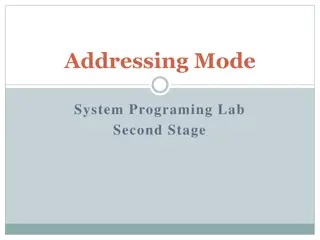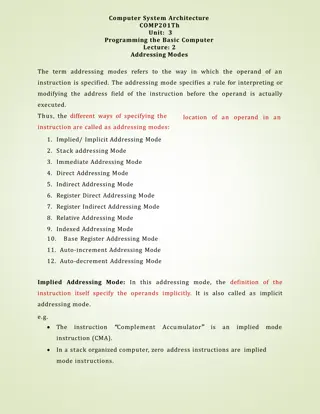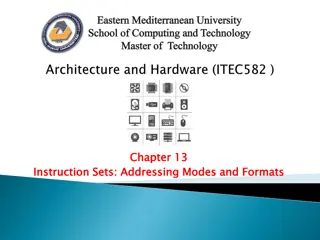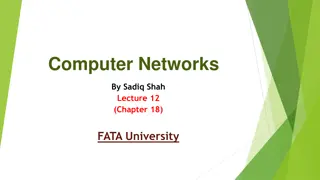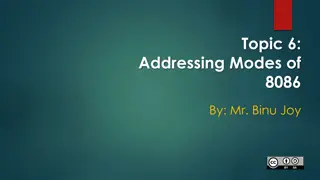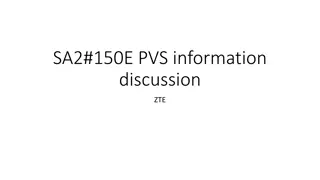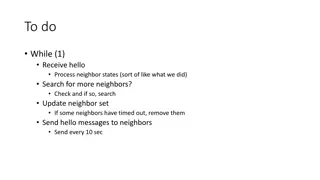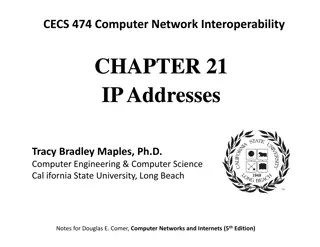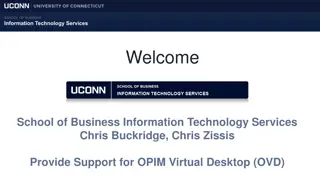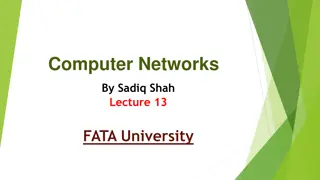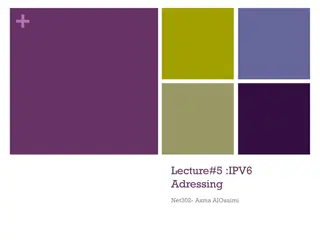Understanding Netid and Hostid in Classful IP Addressing
In classful IP addressing, IP addresses in Class A, B, or C are divided into netid and hostid parts with varying lengths based on the class. Each class has a fixed number of blocks, causing issues with classful addressing. Network addresses play a crucial role, defining organization networks and facilitating device connections to the Internet. Examples and scenarios clarify the concept further.
Download Presentation

Please find below an Image/Link to download the presentation.
The content on the website is provided AS IS for your information and personal use only. It may not be sold, licensed, or shared on other websites without obtaining consent from the author. Download presentation by click this link. If you encounter any issues during the download, it is possible that the publisher has removed the file from their server.
E N D
Presentation Transcript
Netid and Hostid In classful addressing, an IP address in class A, B, or C is divided into netid and hostid. These parts are of varying lengths, depending on the class of the address. In class A, one byte defines the netid and three bytes define the hostid. In class B, two bytes define the netid and two bytes define the hostid. In class C, three bytes define the netid and one byte defines the hostid.
Classes and Blocks One problem with classful addressing is that each class is divided into a fixed number of blocks with each block having a fixed size.
Network Address A very important concept in IP addressing is the network address. When an organization is given a block of addresses, the organization is free to allocate the addresses to the devices that need to be connected to the Internet. The first address in the class treated as a special address. The first address is called the network address and defines the organization network. It defines the organization itself to the rest of the world. The first address is the one that is used by routers to direct the message sent to the organization from the outside. In network address, all hostid are 0s. Given the network address, we can find the class of the address.
Example : Given the address 23.56.7.91, find the network address. The class is A. Only the first byte defines the netid. We can find the network address by replacing the hostid bytes (56.7.91) with 0s. Therefore, the network address is 23.0.0.0. Example : Given the address 132.6.17.85, find the network address. The class is B. The first 2 bytes defines the netid. We can find the network address by replacing the hostid bytes (17.85) with 0s. Therefore, the network address is 132.6.0.0. Example : Given the network address 17.0.0.0, find the class. The class is A because the netid is only 1 byte.
A sample Internet with Classful Addresses 1. A token Ring LAN with network address 220.3.6.0 (class C) 2. An Ethernet LAN with network address 134.18.0.0 (class B) 3. An Ethernet LAN with network address 124.0.0.0 (class A) 4. A point-to-point WAN.
Mask Although the length of the netid and hostid (in bits) is predetermined in classful addressing, we can also use a mask (also called the default mask), a 32-bit number made of contiguous 1s followed by contiguous 0s. The masks for classes A, B, and C are shown in the following table : In Dotted- Decimal Class In Binary Using Slash /8 A 11111111 00000000 00000000 00000000 255.0.0.0 /8 B 11111111 11111111 00000000 00000000 255.255.0.0 /16 C 11111111 111111111 11111111 00000000 255.255.255.0 /24 The mask can help us to find the netid and the hostid. For example, the mask for a class A address has eight 1s, which means the first 8 bits of any address in class A define the netid; the next 24 bits define the hostid. The last column in the table shows the mask in the form In where n can be 8, 16, or 24 in classful addressing. This notation is also called slash notation or Classless Interdomain Routing (CIDR) notation.
The first address (Network Address) can be found by ANDing the given addresses with the mask. ANDing here is done bit by bit. The router outside the organization has a routing table with one column based on the network addresses; the router inside the organization has a routing table based on the subnetwork addresses. A 32-bit number called the mask is the key. The router outside the organization use a default mask; the router inside the organization use a subnet mask. Example : A router outside the organization receives a packet with destination address 190.240.7.91. Show how it finds the network address to route the packet.
The router follows three steps: 1. The router looks at the first byte of the address to find the class. It is class B. 2. The default mask for class B is 255.255.0.0. The router ANDs this mask with the address to get 190.240.0.0. 3. The router looks in its routing table to find out how to route the packet to this destination.





